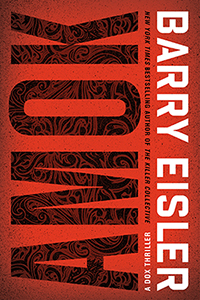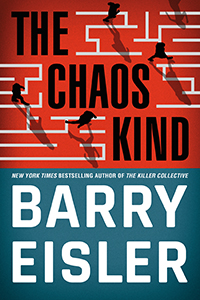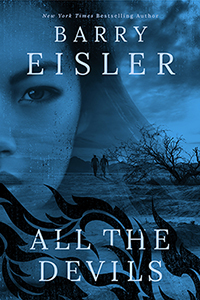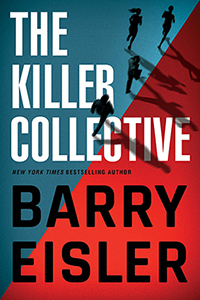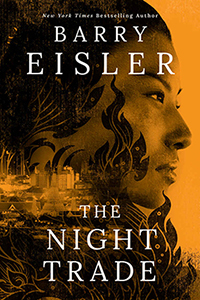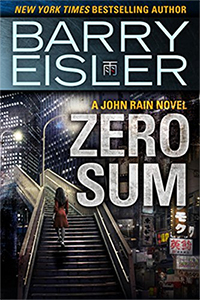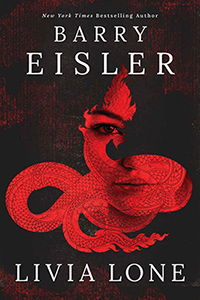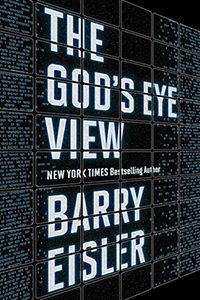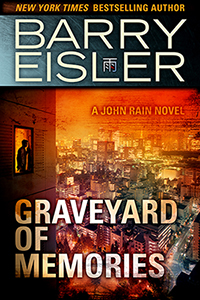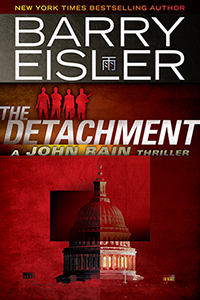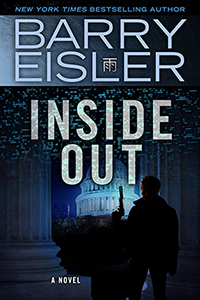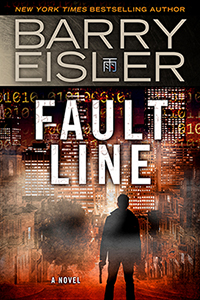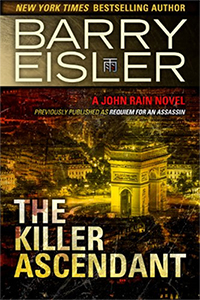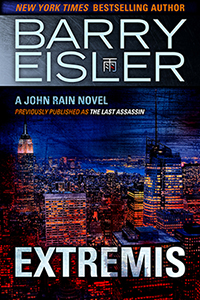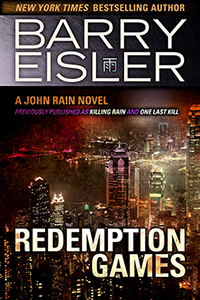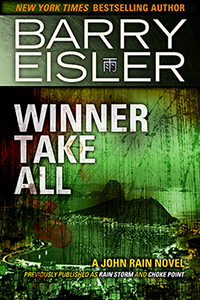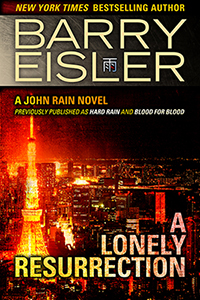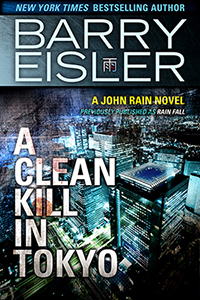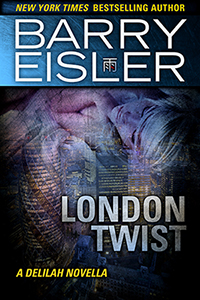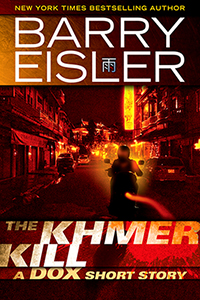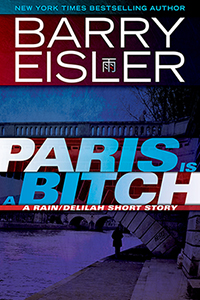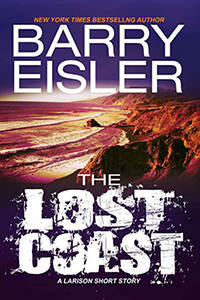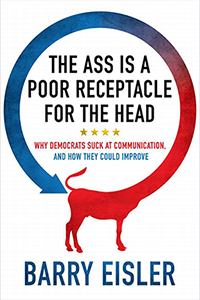Monday, November 09, 2020
Fundraiser for a Tragic Loss to Cancer
Monday, October 12, 2020
How To Write A Killer Opening
This past weekend I had the pleasure of giving a talk at the annual Japan Writers Conference, which was of course held virtually because of Covid. If you want to learn more about how to write an effective story opening, here are my 50 minutes worth of thoughts. Enjoy!
Friday, October 09, 2020
That Rarest Breed: Leftist Political Thrillers
Recently I had a fun discussion with Praveen Tummalapalli about why there are so few leftist thrillers, and of course we talked about much more, too.
The discussion was for an article Praveen is writing for Current Affairs Magazine, but it wound up working well in its own right, so I'm posting it here. Had I known we were going to use the interview not just for background, I would have lit our Zoom call better and used an external mic, too. I might even have combed my hair! And apologies also because, having listened to some of the talk after the fact, I was horrified at how much I was saying "um." I work hard to avoid verbal tics, but that morning the Ums got the better of me.
I've addressed some of these issues before, particularly in the context of the tendency to denigrate as "political" only those storylines that don't jibe with one's own political views. As I sometimes like to ask when people criticize my novels as "too political," "You do know they're political thrillers, right?"
Anyway, regardless of any technical shortcomings, I hope you'll enjoy the discussion. When the article's out, I'll post that, too. And who knows? Maybe some of this will encourage other novelists to depict the thrills inherent in leftist politics.
Thursday, October 08, 2020
Vincent Bevins's The Jakarta Method
Okay, time for another book I've listened to during the pandemic (and now the wildfires). Last up was Barton Gellman's Dark Mirror: Edward Snowden and the American Surveillance State; this time it's The Jakarta Method: Washington's Anticommunist Crusade & The Mass Murder Program That Shaped Our World.
Saturday, August 22, 2020
Barton Gellman's Dark Mirror
I'm still trying to catch up on reviewing some of the great books I've listened to during the pandemic (and now the wildfires). Last time was Maija Soderholm's The Hustler. This week is Barton Gellman's Dark Mirror: Edward Snowden and the American Surveillance State.

I've followed the reporting based on whistleblower Edward Snowden's revelations reasonably closely since June 2013, when I was working on The God's Eye View and was concerned that the secret bulk surveillance (sorry, "data collection") program I imagined for the novel was going to seem like too much. And then, as I dove into Gellman's and other reporting based on Snowden's revelations, I realized the program I had envisioned wasn't nearly enough, and that the reality of domestic spying had already far outpaced my imagination (more on how reality wound up informing God's Eye here).
Beyond the reporting itself, I read No Place to Hide: Edward Snowden, the NSA, and the U.S. Surveillance State, by Glenn Greenwald, along with Gellman one of the reporters to whom Snowden entrusted his revelations (my thoughts on No Place to Hide here and here). I also watched CitizenFour, the Oscar-winning documentary by filmmaker Laura Poitras, another of Snowden's handpicked journalist contacts. And of course Oliver Stone's biopic Snowden, in which Joseph Gordon Levitt, who physically bears little resemblance to the real Snowden, manages an uncanny imitation through body language and a remarkable imitation of Snowden's voice and vocal cadences. And I wrote an op-ed for Time Magazine urging then-president Obama to pardon Snowden (spoiler alert, Obama didn't listen).
Lastly, a few years ago I shared some thoughts on Snowden and whistleblowing alongside former director of the CIA and NSA Michael Hayden in front of the San Francisco chapter of the Association of Former Intelligence Officers. Hayden was promoting his memoir Playing to the Edge and I was promoting The God’s Eye View. I wouldn't say we all saw eye to eye, but it was a good discussion.
So that's the tale of how I've been following the Snowden story since 2013 (I'm chagrined to admit I haven't yet read Snowden's own memoir, Permanent Record). But as familiar as I am with Snowden's revelations and the story of how they came to be, I was still knocked out by the amount of fresh material in Gellman's book. Dark Mirror has plenty about the programs Snowden revealed, yes, but what made the book particularly compelling for me were the personal aspects Gellman detailed: how Gellman built trust with the anonymous source who initially reached out to him; the bordering-on-paranoia steps he took to protect their communications; the decisions he had to make about what news organization to work with on the stories. There's a scene where Gellman is negotiating with the leadership of The Washington Post—on what he would require if he was going to agree to work with them—that actually made me tear up! Which doesn't often happen when I'm reading nonfiction (or at least I can't admit that it does, because that would be bad for my brand).
Part of what made the audiobook so affecting, I think, is that Gellman narrated it himself. Given the personal aspects of the story, and given that Gellman did such terrific job, I'd say the publisher made the right call.
The dictum in detective fiction is that the best stories aren’t about how the detective works the case, but about how the case works the detective. And that’s part of what makes Dark Mirror so gripping—how a set of incredibly high-stakes circumstances affected Gellman, what decisions he had to make, what it put him through and how it shaped and forged him. Anyone interested in investigative journalism will find these sections of the book fascinating and even moving.
Not long ago, I came across a video by screenwriter Michael Arndt on what makes a great story ending. Arndt makes a case for three sets of stakes: external; internal (emotional); and philosophical. I could go on and on about this, but for now I’ll just say that I think part of what makes Dark Mirror so unusual for nonfiction is that all three stakes are in play. External—the risks Gellman was running given the laws and resources the state could deploy against him (reputation, providing for his family, prison). Internal/emotional—how far beyond simply protecting a source can you go before you've drifted beyond journalism and into something else (journalism, advocacy, what is the proper role—can a journalist be “aiding and abetting” as David Gregory infamously suggested)? Philosophical—when it comes to secrets, who ultimately gets to decide (hint: whoever it is, it's not the government)?
And how do you grapple with these momentous questions when you can’t talk to anyone, not even the people you trust the most?
Anyone with an interest in how the government has created a giant one-way mirror through which the government knows more and more about the people and the people know less and less about the government; in why whistleblowing and investigative journalism are our last line of defense against this metastatic asymmetry; and in the mechanics of reporting on one of the most explosive set of national security revelations of all time, will get a lot out of this book. I know I did.
Monday, August 10, 2020
Maija Soderholm’s The Hustler: Sword Play and the Art of Tactical Thinking
I’ve been meaning to share some thoughts about Maija Soderholm’s latest book, The Hustler: Sword Play and the Art of Tactical Thinking, since finishing it a couple months ago. Alas the pandemic and the new manuscript have been a distraction. But here we are at last…
It has been my experience that putting a sword in a person’s hand will bring out their natural personality. You can see people become who they really are—scared, aggressive, joyous, dark, tentative, enthusiasts, killers, or players. It is hard to hide who you are with a blade in your hand. Maybe it is some ancestral DNA that understands what blades can do? After all, the sword has been a killing weapon since the bronze age. Who knows? In any case, it is the best forum I have ever come across to truly be able to “see” people, to learn who they are and how they can be trapped.
Which reminded me of this scene between Rain and his older paramour, Maria Grazia, in Zero Sum:
We walked over to the swords. There were at least a dozen, each resting on a wooden stand holding two components. On top of each stand was a koshirae scabbard and tsuka hilt, suggesting a sword at rest within. But the gorgeous lacquered scabbards and tsukaito ray-skin-and-silk grips were for combat, not storage; for the latter, on the lower tier of each stand was a shirasaya, a plain wooden scabbard, with the blade inside and a plain wooden hilt attached...“Do you remember any of them?” Maria said. “They’ve been with the museum for a long time.”I nodded, feeling a little wistful, and pointed to the one I was already looking at—a classic katana resting in its shirasaya scabbard below a gold lacquer koshirae. “This one was always my favorite.”“Would you like to handle it?”
I glanced at her, remembering how badly I’d wanted that as a boy. “Are you kidding?”
“Just please be careful.”
“Don’t worry, I won’t hurt the exhibits.”
“I’m more worried about you than the exhibits. They’re extremely sharp. I know you know, but still.”I gripped the shirasaya in my left hand and the wood tsuka with my right, lifted the sword from the stand, and then, taking care to draw the mune, the back, along the inside of the shirasaya so as to protect the ha, the edge, unsheathed the slightly curved blade. I held it horizontally at eye level, manipulating it with my wrist, watching the expertly worked steel catch the light, dazzled by the perfect weight and balance, the sudden sense that what I held in my hand was more than mere metal, but was instead alert, purposeful, almost alive. I gazed at the hamon, the temper pattern along the edge, wondering how many battles this weapon had seen, how many lives taken, and for a moment, I felt a strange connection to it—both of us born in Japan, both of us forged for killing.“It suits you,” Maria said, her voice slightly strange.I blinked, realizing I’d been gone for a second. “Hmm?”She was frowning slightly. “Just . . . you seem very comfortable holding a sword. Not like when you wear a tuxedo.”I didn’t know quite what she had seen, but instinctively wanted to conceal it. I looked at the blade again. “I just always liked the kotō, the old swords, better than the shintō, the newer ones. The shintō were expertly made, of course, with beautiful tempering patterns. But I think I liked the more utilitarian presentation of the classic blades. They were less about beauty, and more about business.”
Sonny referred to the ability to “see,” when applied to individual opponents, as “reading,” and of this he was an expert. However, a higher skill he called “writing,” a skill at which the Maestro was most adept. His much talked about “ghostlike” quality came from this. It meant that he was virtually impossible to block and impossible to touch. Seemingly always just out of reach whilst striking you at will. His ability to set you up, coupled with his precision in judging range and his pinpoint accuracy, created the impression of fighting someone who wasn’t there.This “writing” skill meant creating a situation in which he knew what his opponent would do next. Not only could Sonny read people, he could use this knowledge to move them to where he wanted them to go. Fascinatingly, he used this skill to teach as well as to fight.
My play had reached a level at which for the most part I was able to anticipate an opponent’s attack in the instant before he launched it, subtly adjust my position accordingly, and frustrate his plan without his knowing exactly why he’d been unable to execute. After a while of this invisible interference, often an opponent would try to force an opening, or muscle a throw, or would otherwise over-commit himself, at which point, depending on my mood, I might throw him. Other times, I was content merely to flow from counter to counter, preventing battles rather than fighting them. A different approach than had characterized my younger days at the Kodokan, when my style had more to do with aggression and bravado than it did with elegance and efficiency.
Tuesday, May 19, 2020
Dignity: Seeking Respect in Back Row America

There's so much that's impressive about this book. The four-year, zigzagging cross-country journey that undergirds it. The beautiful, moving photographs. The originality and insights, including the abandonment of the sclerotic and increasingly propagandistic left/right framework in favor of "front row/back row."
But for me, what might be most notable is Arnade's ability and inclination not to judge others, but to instead ask, "Am I myself guilty of anything comparable?" A question that is induced by empathy and results in compassion.
I'm not religious, but there's wisdom in Matthew 7:5. Arnade's book is a manifestation of it.
Monday, April 13, 2020
Pandemic Writing...Plus Some Sharp Pointy Things
Saturday, February 22, 2020
Why Biden is Down and Sanders is Up
A year ago, Biden was polling nationally in first place. But a significant amount of his support was coming from people who supported him because of a belief in his “electability.” As soon as the myth of Biden’s electability was punctured, the bubble burst, and Biden’s polling numbers collapsed.
Sanders is the opposite phenomenon. For substantive reasons, a lot of people wanted to support Sanders, but hesitated because they were afraid he wasn’t sufficiently electable. And as Sanders began to raise unprecedented amounts of money from small-dollar donations, rise in the polls, perform strongly in debates, and win the popular vote in Iowa and then in New Hampshire, people who previously doubted his electability began to support him.
If I’m right about this phenomenon, Sanders is only at the beginning of a virtuous cycle. His massive win in Nevada—despite all establishment attempts to stop him—is going to draw even more supporters who had previously hesitated because of electability concerns. And as electability concerns are increasingly replaced by a belief that “Sanders could actually win this,” and as “Sanders could actually win this” is replaced by “Sanders is going to win this,” he is going to become unstoppable, no matter how much the Democratic establishment and the establishment media throws at him.
Of course I could be wrong; having watched innumerable television “experts” humiliate themselves prognosticating, it’s best to be humble about how much one might be missing.
But at this point, this is how I see it.
By the way, I got some of the idea for this post by a fascinating business book I read years ago—Crossing the Chasm: Marketing and Selling Disruptive Products to Mainstream Customers—about how a new technology first attracts early adopters before crossing over to mass-market appeal.
Friday, February 14, 2020
Eminent Monsters
I’ve been writing about torture for 16 years. My initial attempt to grapple with the issue was, I realize now, emotional and ignorant. What I’ve learned since then is that the impulse to torture is a product of emotional urges: the rush of utter dominance over another human being; the satisfaction of instilling fear into a population; the comfort of a talisman. It’s also an outstanding way to produce false confessions. And because we humans are so superbly designed to provide intellectual rationalizations for actions that are in fact driven by emotion, we invent fantasy scenarios like “ticking time bombs” to explain actions we could never honestly justify.
Perhaps the most significant moral characteristic of a nation is its hypocrisy. We have noted that self-deception and hypocrisy is an unvarying element in the moral life of all human beings. It is the tribute which morality pays to immorality.
—Reinhold Neibuhr
From pacifist to terrorist, each person condemns violence—and then adds one cherished case in which it may be justified.
—Gloria Steinem
Sunday, February 09, 2020
More On How to Discuss Capitalism! and Socialism!
Why are publicly financed fire departments good, while publicly financed health insurance is bad?
Of course there may be excellent reasons for why one is good and the other is bad! But in my opinion, this is the right way to approach questions of policy. Declaring Socialism! and Capitalism! is about as substantively meaningful as cheering for your favorite football team.
So please…if you want to comment on this link, don’t offer definitions, don’t shout Venezuela!…just try to consider how publicly financed fire departments and publicly financed health insurance might be similar, how they might be different, and what those similarities and differences might suggest for policy.
No society has ever, or will ever, be built on agreement about substantive conclusions. But there are better ways to reach disagreement, and worse ones. Ways that leave the disagreeing people respecting each other and open to further discussion. And ways that degenerate into pathological antagonism and tribal warfare.
I think the Robinson article is one of the better ways. Here’s hoping it will provide an example…and some inspiration, too.
Friday, January 31, 2020
The Best Way to Talk About Socialism is to Not Talk About Socialism
Why do most discussions of socialism shed so much heat and so little light? Because they’re about socialism! A word that has been so demonized in America (just as the word capitalism has been deified) that it prevents thought and discussion, rather than encouraging it.
Update:
This Nathan Robinson article from Current Affairs—about how publicly financed fire departments and publicly financed health insurance might be similar, how they might be different, and what those similarities and differences might suggest for policy—is an outstanding example of how to approach the topic productively.
Thursday, January 30, 2020
Phoniness and Electability
In September 2015—over a year before Trump was elected president—Rula Jebreal wrote what I think is still one of the most insightful takes ever on Trump’s appeal, comparing him to another rich demagogue, Italy’s former prime minister Silvio Berlusconi.
Update
This Zephyr Teachout op-ed is related and worth considering.






